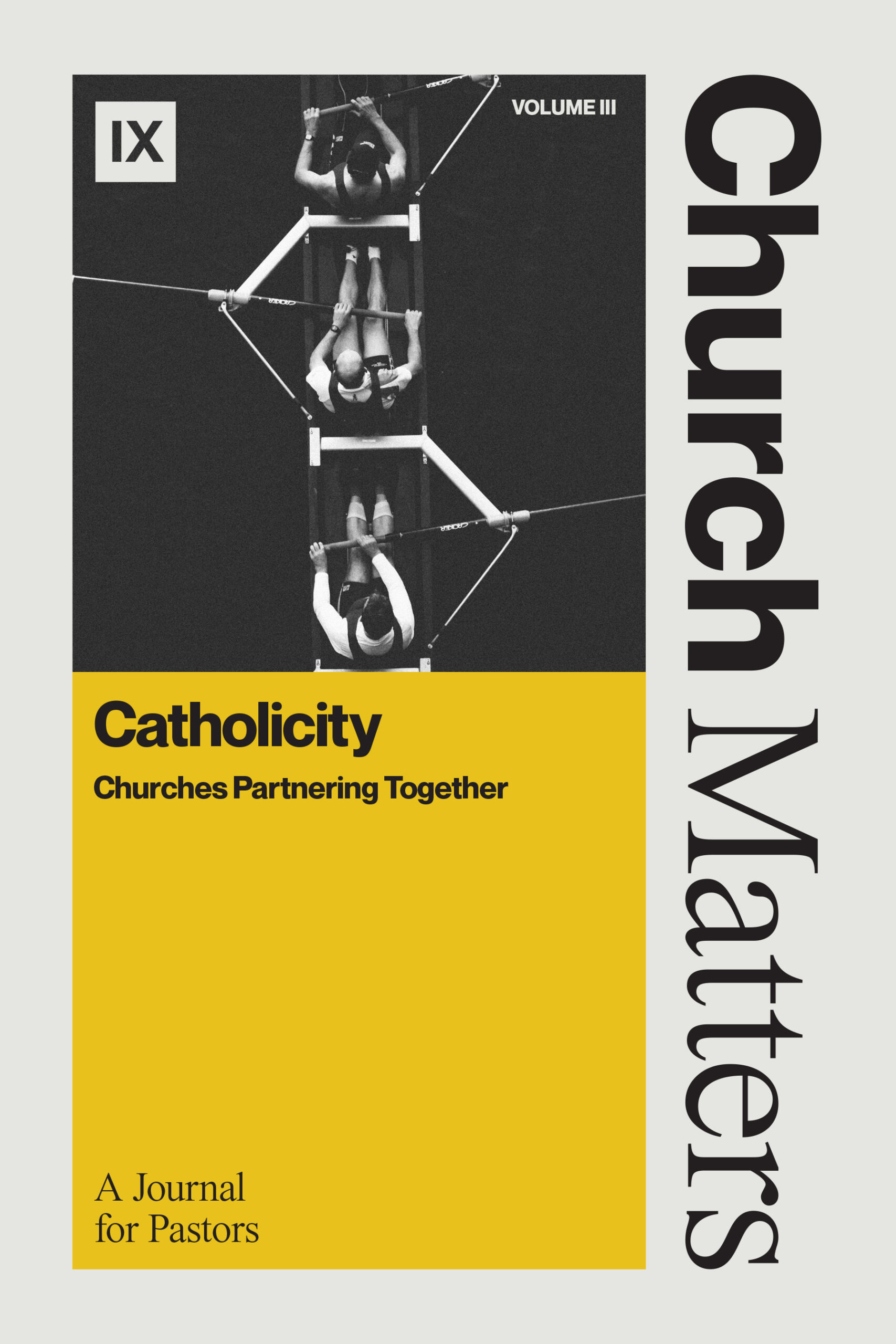Same Health, Different Look: Ecclesiology in Historically Black Churches
When I first entered the 9Marks orbit, gospel-preserving polity felt like a brand-new discovery. Over time, I learned that what 9Marks has really done is repackage old ideas and deliver them to new generations.
For example, many of the nine marks are extrapolations of the Reformation’s two marks of a church: the right preaching of the gospel and the right practice of the sacraments. When I realized the antiquity of these ideas, I wondered where they showed up in the black churches of my youth, where I attended with my parents and where I heard the gospel and was saved. Here’s what I learned: the elements of healthy ecclesiology were present to varying degrees, but the forms often looked different.
My recognition of healthy ecclesiology in historically black churches is relevant to the issue of catholicity for a few reasons.
First, it’s easy to miss shared elements when the forms are different. Second, missing shared elements can then lead us to eschew catholicity because we think there’s no common bond in the gospel.
The goal of this article is to train the eye of Christians outside the Black church to identify the elements of true and healthy churches, even when the forms look different. I also want to encourage those from historically Black churches to rejoice: the saints who labored so that we could hear the gospel had better ecclesiology in many cases than we recognized. Hopefully, this will help the body of Christ around the world to look beyond the surface and remember what we have in common.
HEALTHY PREACHING
The most essential element of a true and healthy church is gospel preaching. By God’s grace, I had the privilege of being around gospel-preaching churches all my life. Terms like “gospel-centered” or “christocentric” were absent. Instead, we would preach and sing a lot about the blood of Jesus. The preachers of my youth would make connections between the Old Testament and the New. Their teaching helped me to see that the Bible is a beautiful tapestry of grace that’s all about Jesus.
On many Sundays, there would be a moment when the preacher “got the talking about” Jesus dying, then there would be an octave shift in his voice, and he would begin to declare that Jesus got up. There was not only gospel preaching but also gospel celebration. Sunday after Sunday after Sunday. And if I had a dollar for every time I heard the phrase “born-again” I would have a lot of dollars.
HEALTHY MEMBERSHIP
Another element of a true and healthy church is meaningful membership, which is an extension of the right practice of the Lord’s Supper. Only born-again believers who are baptized should take the Lord’s Supper, and only those with credible professions of faith should be affirmed as born-again.
Looking back, I remember how not only my church, but so many other churches we visited would talk about “the right hand of fellowship.” They didn’t call it meaningful membership, but when that right hand was extended, it was a big deal. It meant you belonged to us and we belonged to you. If we want to encourage meaningful membership in historically black churches, then we should talk about strengthening the right hand of fellowship in the local churches. We should do primary-source research and apply the primary-source research already done that explores how revivalistic practices weakened the right hand of fellowship.
That right hand of fellowship came with accountability. Pastors or lay leaders found in sin were sat down. This was not church discipline proper, but I surmise it was residue from church discipline of old, perhaps a relic of what older Baptists called “suspension.” Nevertheless, a church already practicing “sitting down” for certain sin issues would be apt to practice excommunication with careful teaching on church discipline. Humorously, I know for sure that the traditional black church usher would have no problem helping pastors fence the Table.
HEALTHY DISCIPLING & EVANGELISM
Growing up, my family regularly ate at local restaurants after church. We children would get restless as the adults talked for hours. I didn’t realize it then, but that was a culture of discipling and hospitality. It made the church family feel like a real family. Frequent fish fries and cookouts at other members’ homes helped, too.
My parents had an open-door policy. My father shared the gospel with plenty of our friends growing up.
I remember the Brown family. They would use their minivan—affectionately nicknamed he Green Goose—to transport youth and children all over the place. Many memories were made through their ministry, and we heard the gospel all the time. Their long-term investment in me was a huge part of my conversion.
When I was converted in a county jail, I immediately started proclaiming the gospel because I knew that’s what genuine Christians did. Through the examples of my godly father and Mr. B., I learned that a Christian is someone who knows and declares Jesus’s sacrificial death and life-transforming resurrection.
HEALTHY MISSIONS
A missionary named Dr. Joseph Jetter was one of the few black missionaries that would visit my childhood church. He would come and encourage us to keep our eyes on the gospel mission. It was never about fast growth. It was always about gospel preaching and planting churches—long-haul work.
To my knowledge, there was never a time when my childhood church considered defunding him because of perceived unfruitfulness. It was the opposite. The mothers of the church would remind us weekly to support his family and give above and beyond what we could to the mission field, even if it was only our pennies.
HEALTHY PRAYER
Every Wednesday night Bible study for ten years, we would pray for three unbelieving husbands of church mothers among us. In that tenth year, all three of those husbands were converted. It seemed like God was showing us how easy it was for him to turn hearts; he was training us to be persistent in prayer. I know how to pray because of these saints, and I know that prayer is powerful because of these saints.
The vital element of prayer was present in my little historical black church. But the forms looked a lot different than my current church. Today we all sit in rows, pray short prayers, and cry quietly; kids get restless, but our inner-man is strengthened. Back then, we held hands in a big circle, rocked and swayed, and cried out loudly; kids complained, but the inner-man was strengthened all the same.
CONCLUSION
You can build beautiful partnerships with churches that look different than yours if you look beyond the forms to see the elements. That church down the road might be a true and well-ordered church, but in ways you’re just not used to. Consider giving the benefit of the doubt to brothers and sisters in Christ who come from different traditions. If we do, I’m confident old barriers to catholicity will fall down and new partnerships will flourish.









